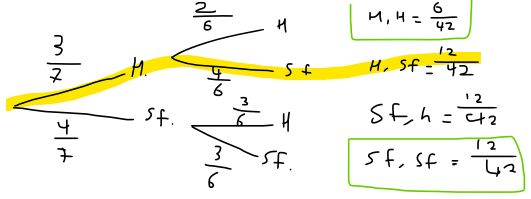Kulla_9289
Junior Member
- Joined
- Apr 18, 2022
- Messages
- 207
A reading list contains 3 historical books and 4 science-fiction books. What is the probability that Tena will randomly choose a historical book for her first repost and a science-fiction book for her second?
a. 12/49
b.2/9
c.2/7
d.1 2/7
I got 3/7, but it's not an option. Any help will be appreciated.
a. 12/49
b.2/9
c.2/7
d.1 2/7
I got 3/7, but it's not an option. Any help will be appreciated.


